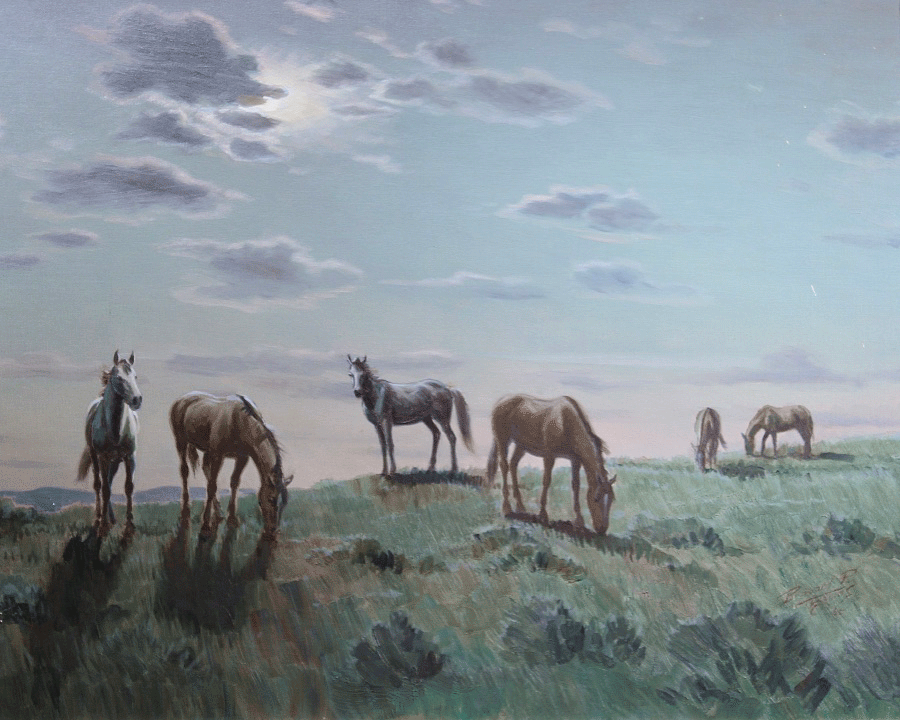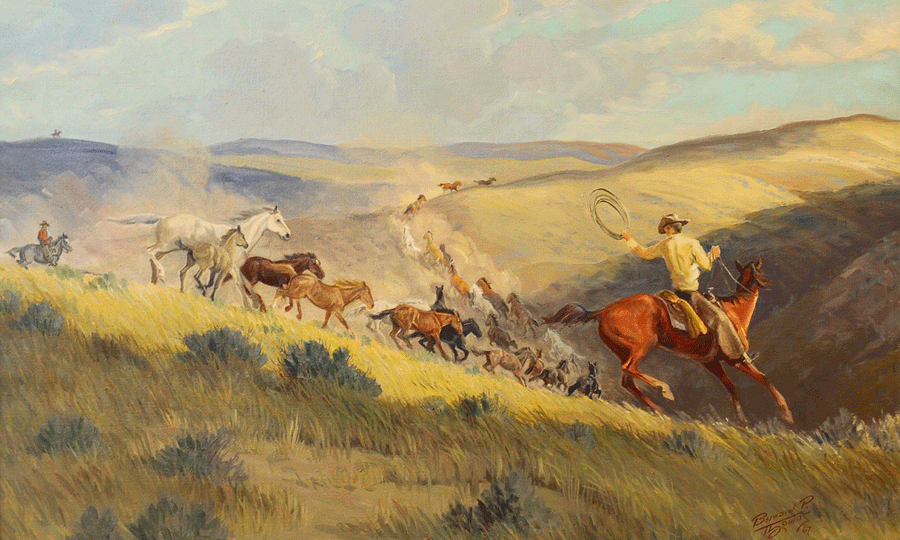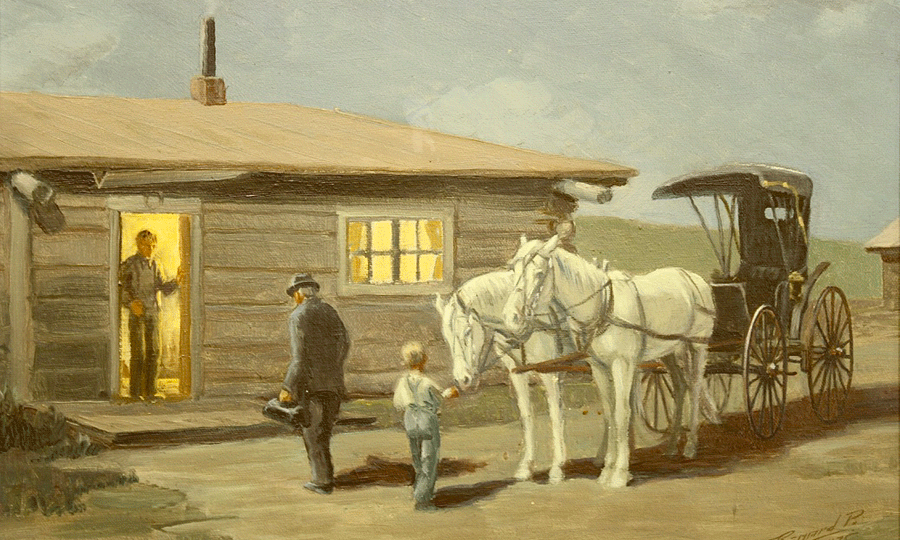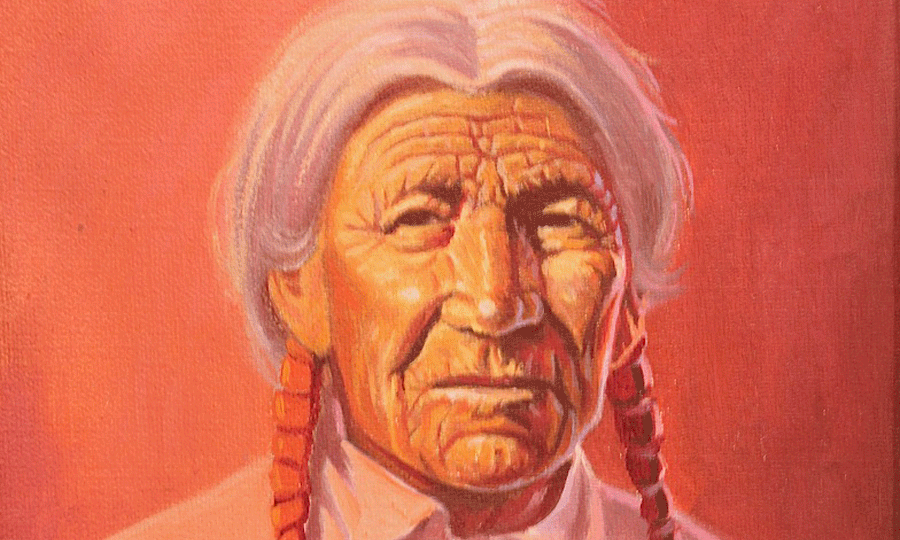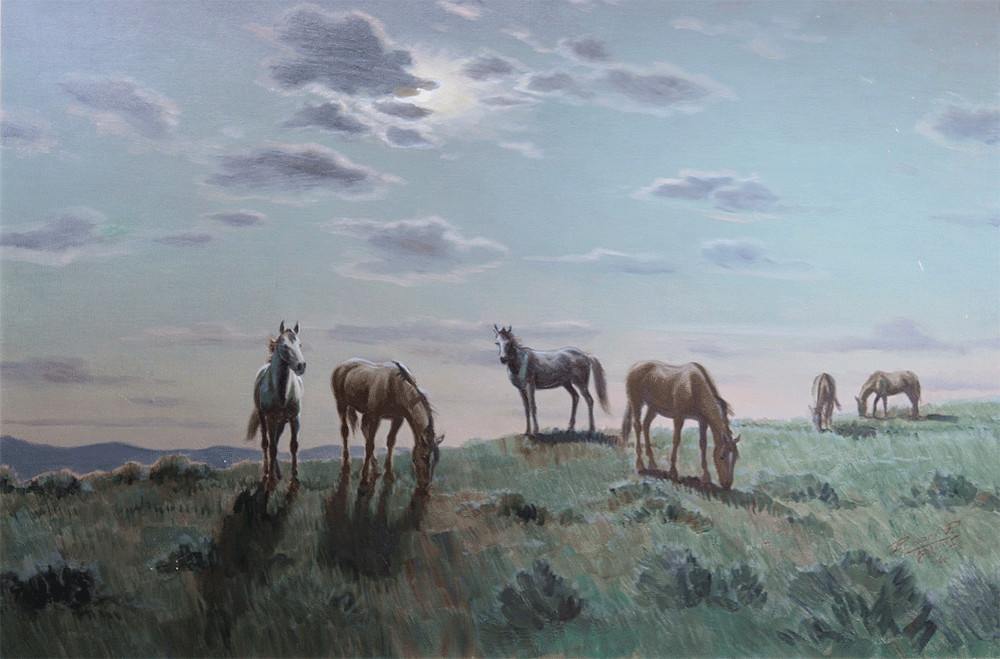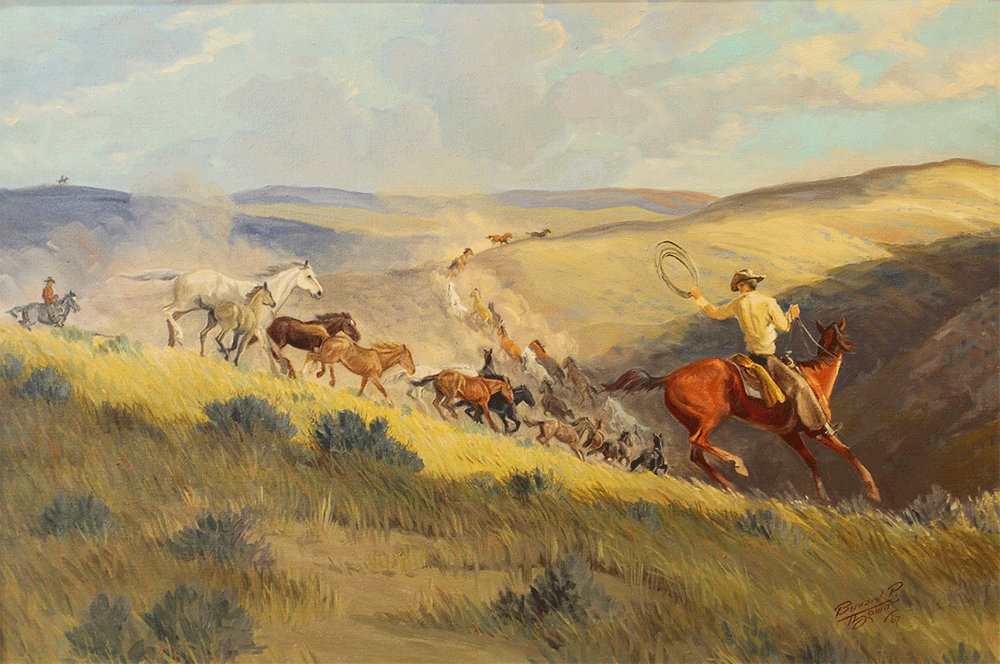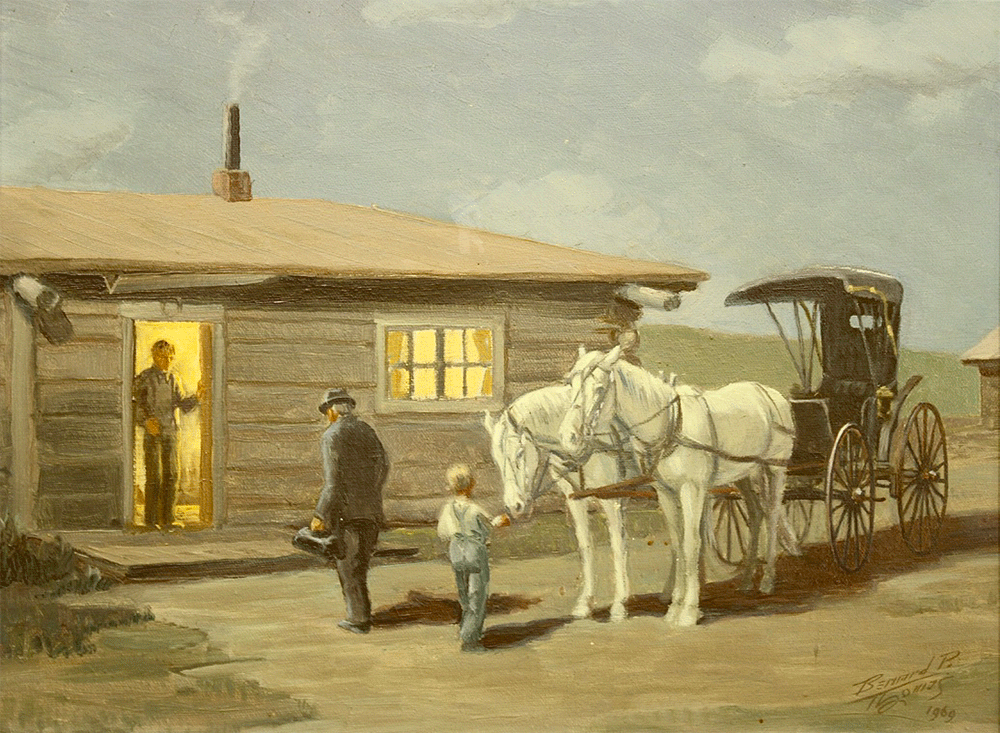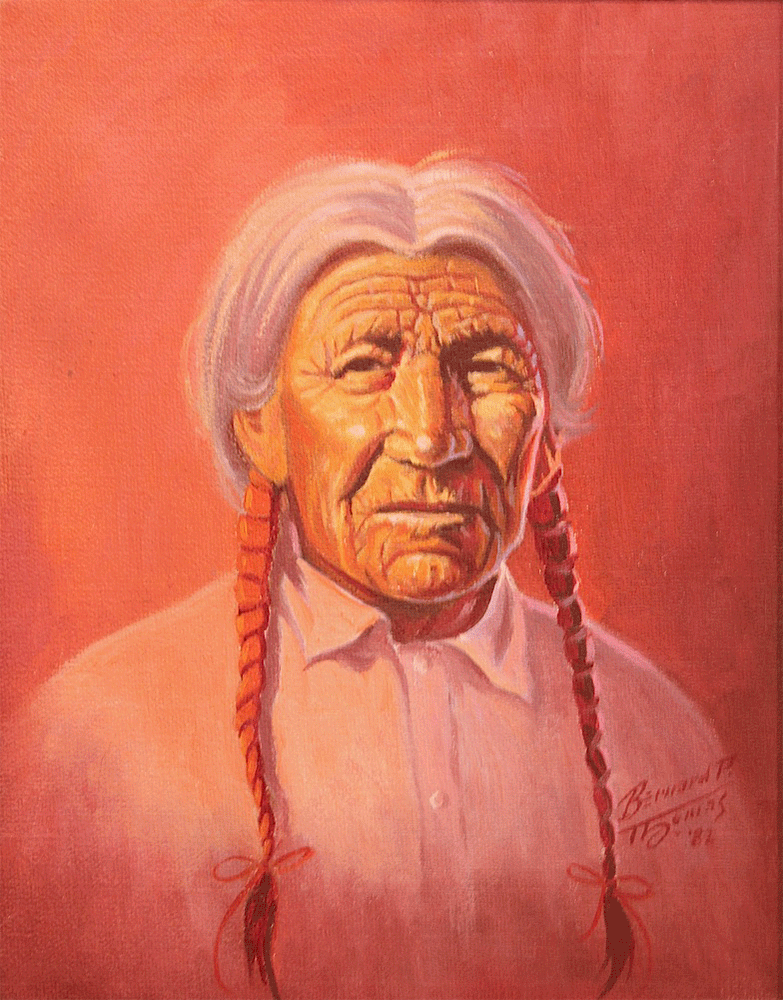Bernard Thomas
Thomas was a painter of western scenes, horses, Indians and their lives on the reservation; he also gave art instruction to students.
Originally from Sheridan, Wyoming, he loved football and art, giving up the sport to concentrate on a career in art. Thomas graduated from Woodbury College in Los Angeles with a Bachelor of Science degree, earning the Leo Youngsworth Award for outstanding senior art student at Woodbury.
He became a camouflage technician at the outbreak of WWII and caught the attention of General Patton in 1945 through sketches he had drawn while a member of the general's third army. One of his sketches was used in the Stars and Stripes. Thomas was awarded an Army scholarship, choosing the Ecole des Beaux Arts in Paris for further study. Upon his return to the U.S., he devoted himself to painting western scenes and native Americans.
Also a painter of murals, one of his most famous ones is the "America the Beautiful" room at the Melton Autorama in Hypoluxo, Florida. He also painted the "Golden Falcon" mural in the Golden Falcon Hotel in Fort Lauderdale.
Originally from Sheridan, Wyoming, he loved football and art, giving up the sport to concentrate on a career in art. Thomas graduated from Woodbury College in Los Angeles with a Bachelor of Science degree, earning the Leo Youngsworth Award for outstanding senior art student at Woodbury.
He became a camouflage technician at the outbreak of WWII and caught the attention of General Patton in 1945 through sketches he had drawn while a member of the general's third army. One of his sketches was used in the Stars and Stripes. Thomas was awarded an Army scholarship, choosing the Ecole des Beaux Arts in Paris for further study. Upon his return to the U.S., he devoted himself to painting western scenes and native Americans.
Also a painter of murals, one of his most famous ones is the "America the Beautiful" room at the Melton Autorama in Hypoluxo, Florida. He also painted the "Golden Falcon" mural in the Golden Falcon Hotel in Fort Lauderdale.

LOOKING FOR A SPECIFIC PIECE?
We would be pleased to assist you in locating a western artist or Indian piece that you are particularly interested in. Contact us today to begin the search for your next piece.
CONTACT THE GALLERY







